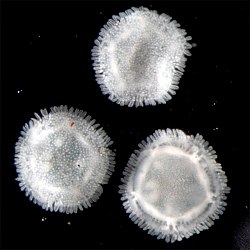| Xyloplax janetae | |
|---|---|
 | |
| Scientific classification | |
| Kingdom: | Animalia |
| Phylum: | Echinodermata |
| Class: | Asteroidea |
| Order: | Peripodida |
| Family: | Xyloplacidae |
| Genus: | Xyloplax |
| Species: | X. janetae |
| Binomial name | |
| Xyloplax janetae Christopher L. Mah, 2006 [1] | |
Xyloplax janetae is a Xyloplax of the family Xyloplacidae. It lives on the surface of wood sunken to abyssal depths. [1]
